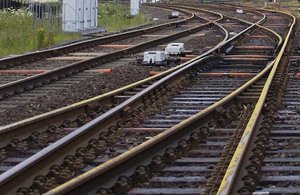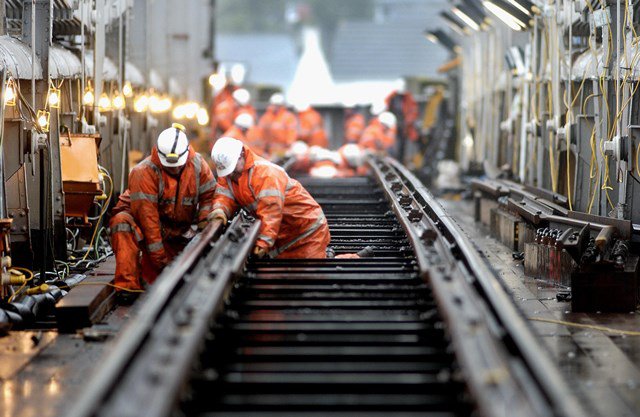
Disruption to train passenger services on the East Coast main line on 27th December has been blamed on faulty plant.
On 27th December thousands of passengers using King's Cross and Paddington services in London suffered severe delays and disruption after Christmas engineering works ran over schedule. Network Rail launched an immediate investigation into what went wrong and has now published its findings.
Chief executive Mark Carne said: "A number of things went wrong in these two instances. In addition it is clear that our project back-up plans and the train service plans should have done a much better job in protecting the travelling public from our engineering problems.
"Over Christmas, we undertook the biggest programme of engineering and investment work ever, on train lines across the country. 99% went to plan but in the case of King’s Cross and Paddington we let passengers down.
“I sincerely apologise for the disruption over the festive period and we are determined to learn the lessons so that we can continue to make the improvements the travelling public deserve.”
The King’s Cross incident related to work being done at Holloway Junction, 2km to the north. Two of the junctions and 500m of the two railway lines between them were being replaced between Christmas Day and Monday 29th December 2014. Although a routine operation on the Network, it was a big job, involving the replacement of 6,000 tonnes of ballast. Two other adjacent railway lines were needed for the freight trains that supported the work. The work was undertaken by an alliance of Network Rail and Amey Rail.
The official report into the delays, written by Francis Paonessa, managing director infrastructure projects at Network Rail, says: “Due primarily to issues with the removal of the old ballast, scrap rails and sleepers, resulting from failed new equipment, the project had slipped to six hours behind plan by the evening of Christmas Day. The equipment failures were unexpected, due to the provision of new hardware that had been bought specifically to reduce the risk of breakdown. [See below for further details.] However this new hardware had not been tested in the railway environment before deployment, and was not reliable when put to use. Despite this, it was still believed that two of the four railway lines could be opened on the morning of Saturday 27 December for the reduced passenger service that had been agreed previously because there was still some contingency time in the plan. In any event the project had long passed the point of no return by this time – the full works were committed. Overnight, the physical project works then fell out of sync with the logistics plan for the engineering trains and crews. Progress suddenly fell to a crawl as train drivers reached maximum shift length limits and trains were left out of position to support the work. By late the following morning (Boxing Day), the project had fallen to 15 hours behind plan and an overrun was declared.”
A separate over-run, on work on the Great Western main line, was blamed on the contractor Signalling Solutions Limited (SSL), which took nearly 10 hours to complete the planned two hour safety validation, testing and sign-off of a new signalling system at Old Oak Common due to some of their testing work needing to be redone or rechecked.
The report concludes: “Network Rail recognises that it needs to improve both project and operational contingency management, so that better identification of delivery problems results in better operation of recovery services. It may also be necessary in some circumstances to change the threshold for project contingency although this will have cost consequences and add to disruption for other sets of passengers.”
In neither instance, it seems, was Network Rail itself directly to blame. However, chief executive Mark Carne is prepared to shoulder some responsibility. In his foreword to the report, he writes: “Our contingency plans should address these issues and protect passengers from our problems as far as possible. And our industry service recovery plans should minimise the impact of any disruption once it has occurred. On these occasions we simply did not do these things well enough.”
Of the lessons learned, he adds: “The report describes a number of improvements that must be made. I would highlight three that deserve special prominence.
- Improve the effectiveness of our project and operational contingency plans so that we put minimising passenger disruption at the very heart of our planning.
- Improve our management of the performance of critical contractors and, in the case of one specific contractor, do a better job of working with them to improve their signalling commissioning process.
- Work with industry colleagues to improve service recovery and to provide better information to passengers."
{{image2}}
Plant failure
Three hours were lost at Holloway Junction during the process of ‘scrapping out’ where the 500m of old track and sleepers were flame cut, dismantled and loaded onto engineering trains marshalled on the adjacent track. Machine operator experience contributed to lost time but the main cause was that the fittings between the road-rail vehicles and the new log grabs kept leaking hydraulic fluid, losing pressure and not working properly. The log grabs (pictured above) were used to remove the scrap track and rail sleepers.
The road-rail vehicles were provided by an approved supplier, Watford-based Readypower, to minimise the risk of mechanical failure. Readypower also provided eight new log grabs to reduce the risk of key plant failures. Seven log grabs were needed to deliver the plan and a spare was provided as a contingency. It also provided an on-site fitter so that any equipment problems could be fixed quickly.
The on-site fitter was constantly working to fix the problems and delays mounted. The plant supplier had provided new log grabs to specifically reduce the delivery risk. However, the unintended consequence was to introduce a delivery risk because the grabs had never been operated with these specific RRVs. The issue of the leaking fittings is under separate review. In addition, one of the seven RRVs was disabled by a fault for 3 hours 35 minutes. The repair was beyond the capability of the on-site fitter so an off-site specialist was called to site. Further delays followed on.
The full report can be downloaded from the Network Rail website (link opens in new window).




